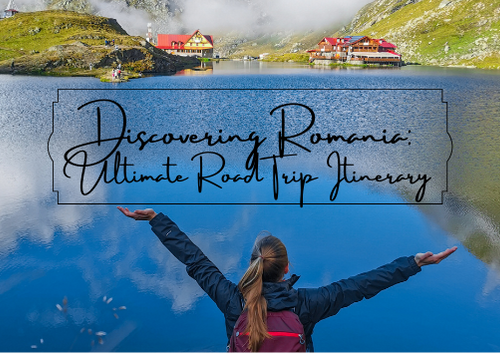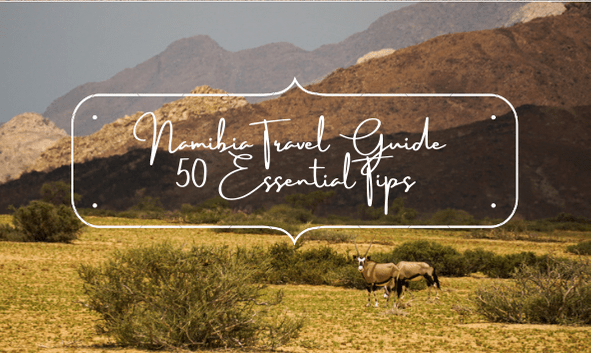
Namibia Travel Guide: 50 Essential Planning Tips
Are you planning to travel to Namibia and wondering what you should consider when planning your trip? Or are you just looking for some inspiration and deciding if Namibia is right for you? No matter what your situation, Namibia is a one-of-a-kind destination, guaranteed to leave you with unforgettable memories. Although Namibia is a wonderful country to visit, it is important to consider some essential points while planning your trip. This Namibia travel guide will give you 50 essential tips to help you plan your ultimate road trip to this southern African gem.
But before we get started with planning, let’s look at some basics & questions you may have up-front.
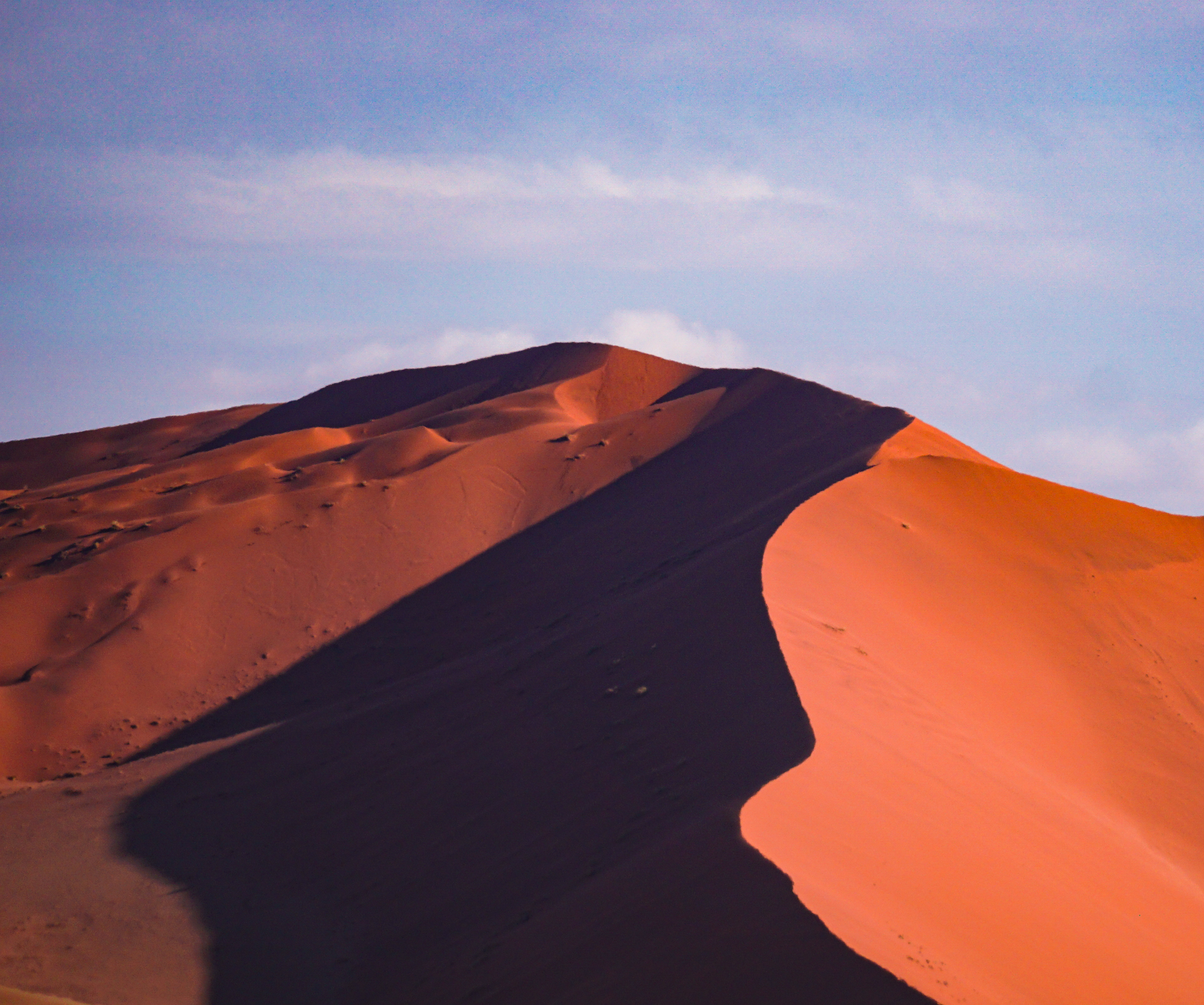
Is Namibia worth visiting?
Before visiting Namibia, I knew very little about the country other than having seen breathtaking pictures of the Namib desert, the eerie dead acacia trees of Deadvlei, and the amazing wildlife photos from Etosha National Park. These stand-alone are already enough to get a travellers’ heart beating a little faster.
After having actually traveled there, I can absolutely and without any limitations say that Namibia is absolutely worth visiting and will likely be one of your most memorable trips.
If you love to take road trips, appreciate beautiful landscapes and nature, have a passion for seeing wildlife, and are looking for some one-of-a-kind photography opportunities, Namibia should absolutely make it to the top of your travel bucket list.
There is just something about the endless valleys, jagged mountains, deep canyons and ancient sand dunes that captivates the traveller’s heart and leaves behind unforgettable memories.
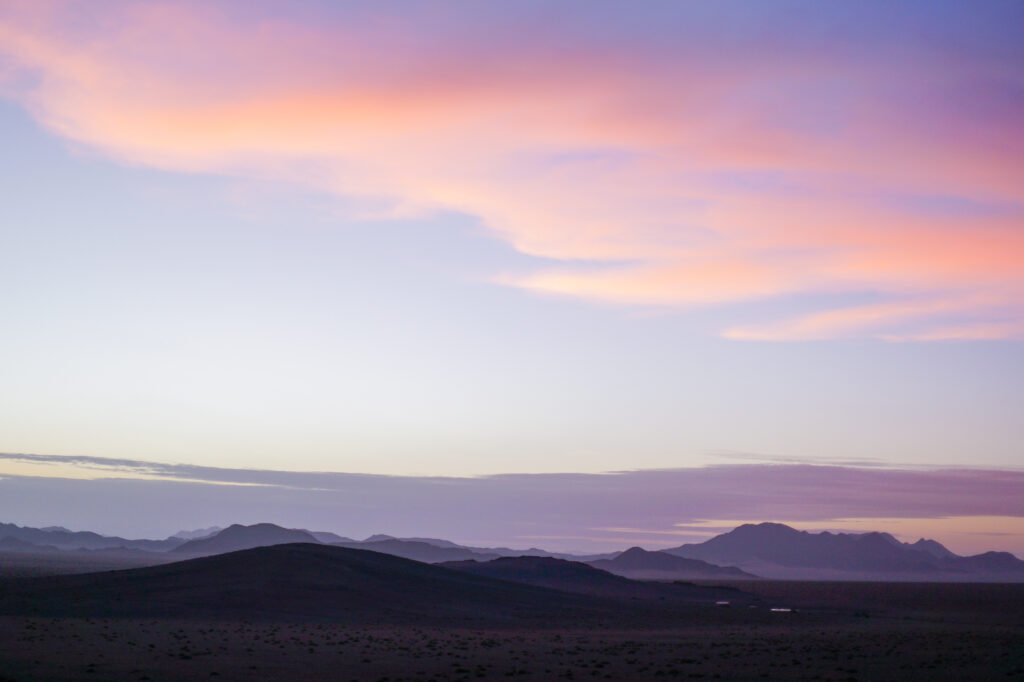
Is Namibia the right destination for me?
Whether Namibia should make it on your travel bucket list depends on how you like to spend your vacations & what you are coming for.
If beach vacations, resorts, and vibrant cities are your thing, Namibia is probably not a country you will enjoy much. Of course, you can go for a swim on the beach between Walvis Bay & Swakopmund. Also, Swakopmund is a charming town with cafes, restaurants and a coastal-resort feel to it. Also, there is plenty of chance to wind down, reconnect with nature and relax at the beautiful lodges.
If you are into breathtaking nature, road trips, wildlife-spotting, photography, and adventure, I promise you will love it!
What is Namibia famous for?
The two most famous travel destinations in Namibia are Sossusvlei in the heart of the Namib Desert and Etosha National Park – one of the largest wildlife conservancies in Africa. Although these are usually on top of any Namibia-visitor’s bucket list, there are many equally stunning places off the beaten path that you should not miss out on.
For example, the stunning Spitzkoppe mountain – the “Matterhorn” of Namibia; the Brandberg massif with its famous rock paintings; Fish River Canyon – the second largest canyon in the world – just to name a few. Moreover, the sheer endless valleys, savannas, its diverse wildlife, and game grazing right by the road are sure to leave you speechless.
For some inspiration and must-sees check out my ultimate “Best of Namibia” 3-week road trip itinerary or post on the 40 Best Things To Do in Namibia.
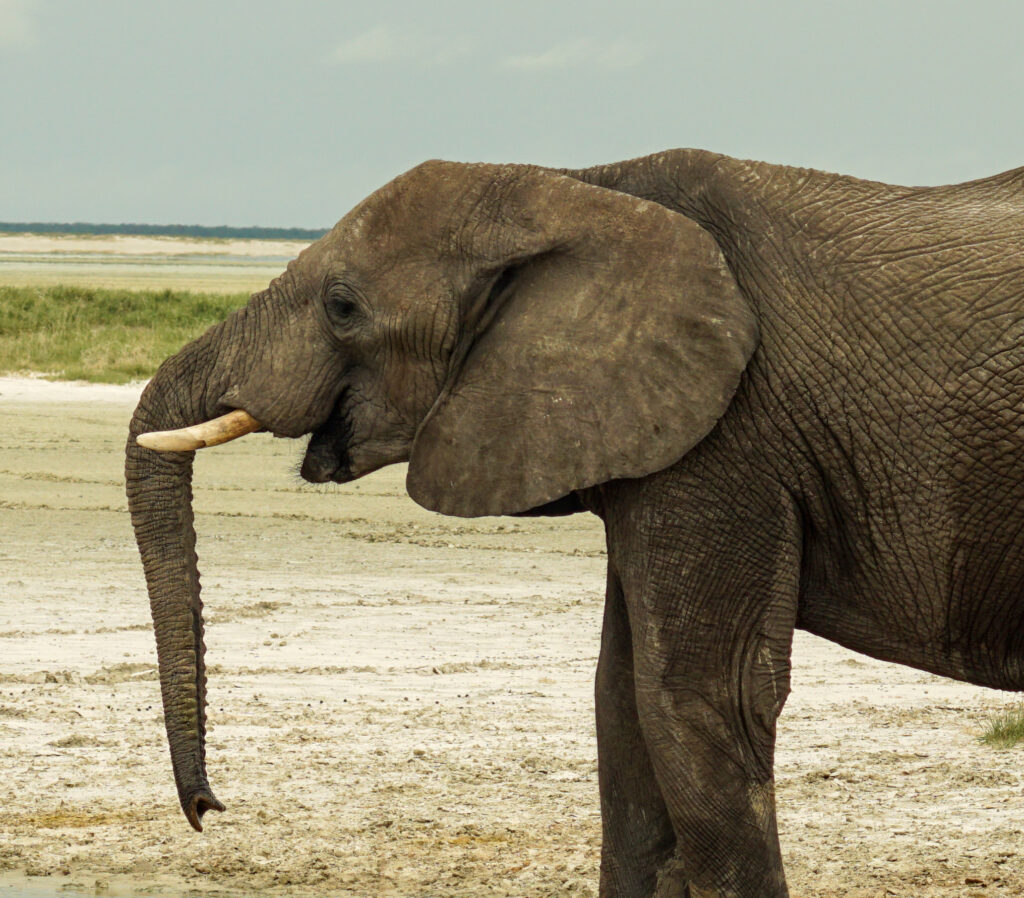
What is the best time to visit Namibia?
Namibia is a great country to visit all year round. High-season is in June & July (during Namibian winter) when temperatures are warm during the day and chances of rain are low & wildlife-viewing is the best. Shoulder months are May and September, while the low-season runs from October to April. This is the long, hot, Namibian summer where it can get up to 40°C during the day (especially in the desert) and chances of rain are higher.
That being said, I visited in December, which was low-season (i.e. rainy season). Besides getting a bit of rain for 1-2 days, the weather was perfectly fine. Most of the country is very dry so chances of rain are still quite low in the rainy-season.
One huge advantage of traveling during low-season is expenses: Some lodges we stayed at can be at least double the price during high-season. To give you an example: the Sossus Dune Lodge (one of the most expensive lodges during our vacation) was about $300 per night during low season and costs around $700 per night during high season. So travelling October to April can really save you large sums of money.
Another upside is that you will get far fewer tourists and have some places almost completely to yourself: e.g. Sossusvlei at sunrise, Etosha NP was not overcrowded and for the night we stayed at Vingerklip, we were the only guests in our lodge! Honeymoon-feeling all the way.
How expensive is Namibia?
The budget of your trip will depend on where you choose to sleep. In most larger cities such as Windhoek or Swakopmund you will have plenty of accommodation options to choose from – from low budget to luxury.
However, in some more remote parts of Namibia, your choice of accommodation will be quite limited and mostly come down to staying at a lodge or staying at the campsite. So the cost of your trip will depend on how you are planning on spending it. For Lodge accommodation, you can usually calculate about $100-$250 per night (in low-season) while you can get camping spots starting at $10 per day.
Is Namibia a safe country to visit?
Namibia is one of the safest countries in Africa to visit for tourists. It’s much safer than its direct neighbor South Africa.
As can pretty much be said for most travel destinations, I do not suggest walking around alone at night (especially near townships), don’t walk around flaunting expensive jewelery, try keeping your camera stowed away when not in use, and don’t leave valuables visible in your car, etc.
The best advice really is: using some common sense will get you very far. We did not feel unsafe at any point during our trip, even in very remote places.
Is driving in Namibia dangerous?
The quick answer: No. Driving in Namibia is safe – as long as you stick to some rules (which you will likely also find in your rental car contract). These include sticking to the speed limits (especially on gravel roads – max. 80 km/h), not driving in the dark and keeping an eye out for wildlife.
If you stick to these basic rules, driving is not dangerous. Most road traffic accidents happen when breaching these rules. For some more detailed advice on driving in Namibia, keep reading below.
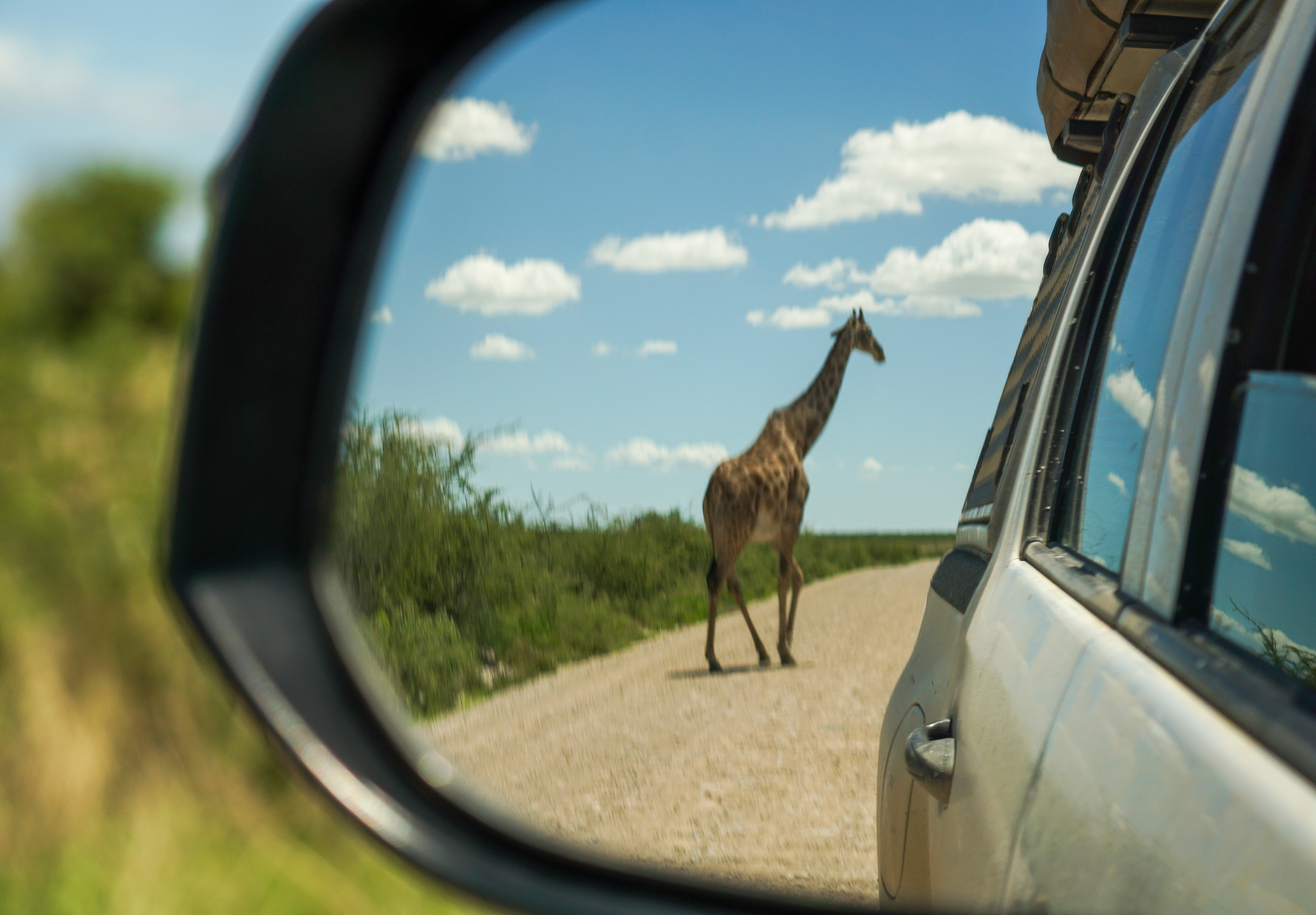
Namibia Travel Guide: 50 Essential Planning Tips
Now that we’ve covered the basics (and you’ve hopefully decided that Namibia is a must-see for you!) let’s deep-dive into my Namibia travel guide and 50 essential tips for planning your ultimate (road) trip.
I’ve split the Namibia travel guide into different categories: things to consider before getting there (preparation, health & safety, bookings, packing, etc.), points to consider upon arrival, important advice for driving in Namibia, and things to keep in mind en-route.
If you are planning to visit Sossusvlei, Etosha National Park, and/or Spitzkoppe in your itinerary (which ideally you should!), make sure to check out my posts below for some key advice to make the most out of your stay:
- Sossusvlei
- Etosha National Park
- Spitzkoppe (coming soon)
Without further ado, here are my 50 essential tips in my Namibia travel guide!
Coming prepared is Key
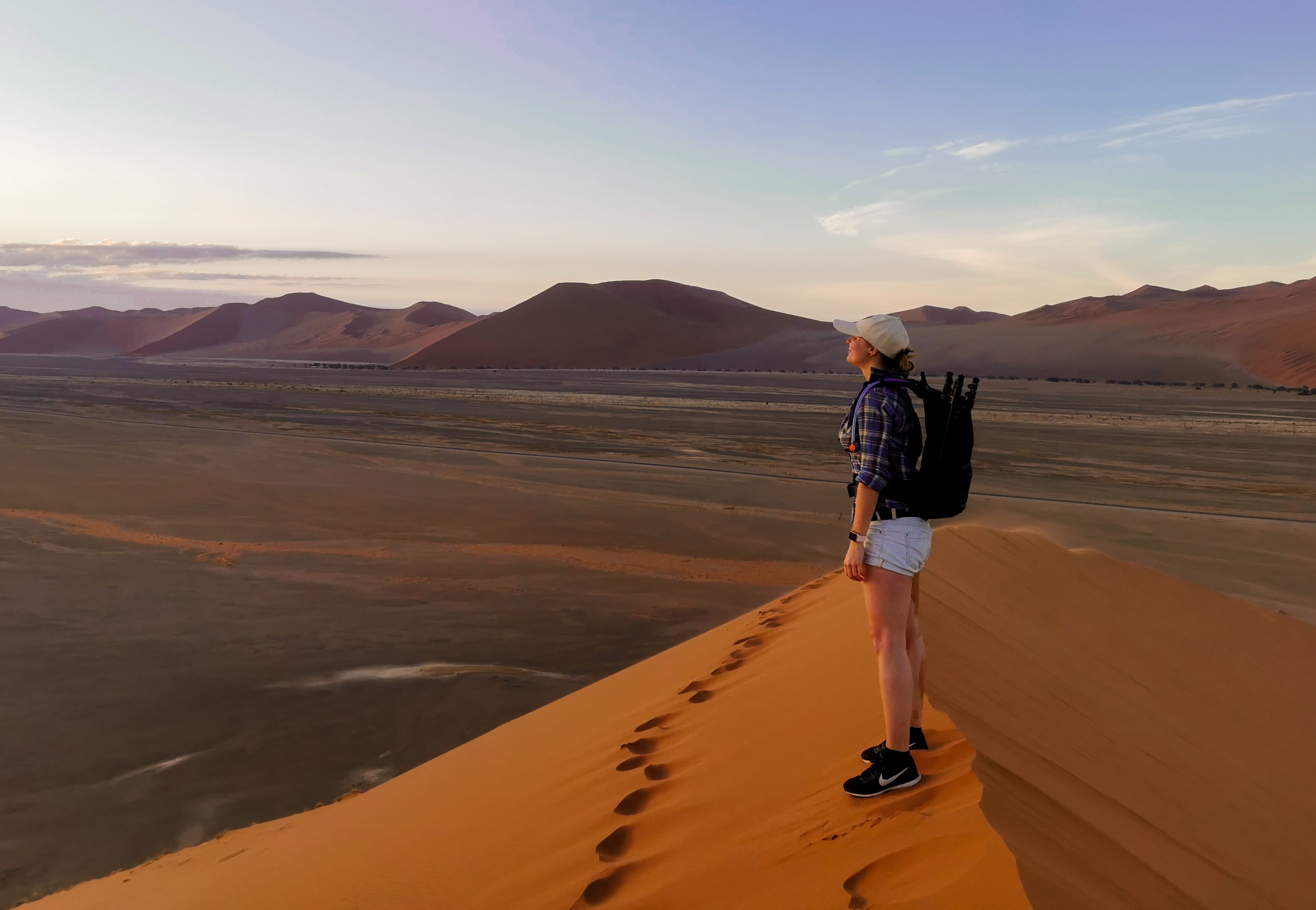
1. Get a 4×4 car / 4WD
Do yourself a favor and rent a 4×4 car / 4WD. We rented with ASCO and had great service & equipment in the car – great value for money.
2. Actually read the rental car insurance policy
It is a long document and as it is usually very standard I rarely read the insurance policy in full when renting a car e.g. in Europe. However, for Namibia, it is worth actually reading the insurance policy.
When driving in Namibia, if you don’t stick to the rules, chances are pretty high that something will happen. And even when sticking to all the rules, it is likely that you will have at least one flat tyre. So make sure you check the rental car policy and get the right insurance coverage for your needs. Read carefully what is included & what isn’t.
For our trip we got a Miles & More Gold card which included full insurance coverage for the rental car, so we decided to go with standard insurance. If you don’t have credit card insurance covering rental cars I highly recommend going with the highest insurance class.
3. Plan your Itinerary
Make a list of everything you absolutely want to see – and things that you will be fine skipping this time around. For some inspiration check out my post on “40 best things to do in Namibia”.
Distances in Namibia are very far & easy to underestimate. It is not recommended to travel for more than 400 km in one day. Therefore, unless you have 4 weeks’ time, chances are you will need to come back for round 2 anyway ;-).
We always use a self-made excel sheet to plan our trip. This gives us a great overview of distances, drive time, departure & arrival destination for the day as well as an overview of accommodation, contact details, etc.
For my “Best of Namibia” ultimate 3-week itinerary (day-by-day), check out my post here.
4. Make sure to check COVID-19 restrictions & entry requirements
I visited Namibia in Januar 2021 during COVID-19. During our trip we found that visiting Namibia is still very worth it.
Entry into Namibia is possible via the main international airport in Windhoek (Hosea Kutako International Airport) as well as Walvis Bay airport. Entry via land borders is possible through Botswana through Ngoma, Mohemo Mamuno, and Impalila Island. Entry via Zambia is possible through Katima Mulilo.
Entry is only possible with a negative PCR COVID-19 test (document in English), issued from a certified laboratory in the country of origin. The test must not be older than 72 hours. This is required even if you are vaccinated.
Furthermore, you will need to fill out a COVID-19 primary surveillance form and a health questionnaire. You can print these out here (Application forms and Questionnaire).
What we also brought on our trip was a travel itinerary as well as a confirmation that our travel insurance would cover COVID-19-related costs. We had this statement issued from our travel insurance provider. However, we did not need to show these to anybody. A first accommodation booking at your first destination should suffice, as well as a rough overview of where you will be traveling.
Although the above outline the regulations at the time of writing, things can change fast, so make sure to check out the website of the Namibian immigration authority for current & up-to-date information from the Namibian tourism board here.
While in the country, we were able to move quite freely. Restaurants and cafes were open, tours & guided game drives were running and stores etc. were open. You will need to wear a mask when outside in public and also during tours & excursions. We found that some place were stricter than others, so just go along with what people are doing wherever you are. You can never go wrong with wearing a mask at all times.
The only minor downside is the curfew starting 9 pm. This means you can go out for dinner until max. 7:30 pm, when kitchen closes for last orders. The Namibian police apparently really checks this and we heard of cases of people getting arrested when out after 9 pm.
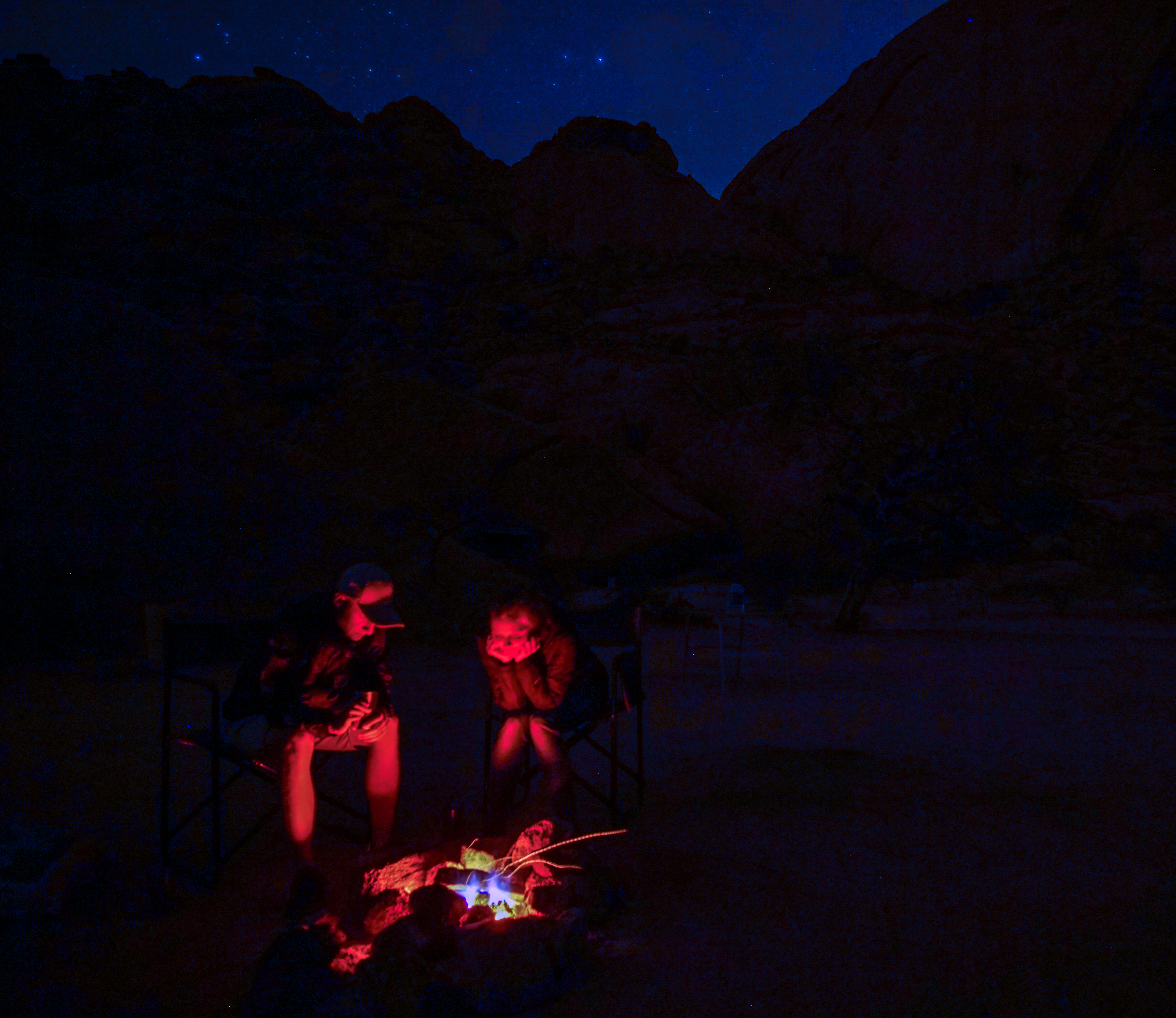
5. Check what vaccines are recommended & get them
Which vaccines are recommended for travelling to Namibia? For all travellers following vaccines are highly recommended: Tetanus, Diptheria, Poliomyelitis, Hepatitis A & rabies.
For travellers exposed to special risks, the WHO furthermore recommends:
- Hepatitis B for close social contacts and long-term stays
- Typhoid in areas of poor hygienic conditions
- Rabies for trekking tours and long-term stays
- Measles for children
- Meningococcal meningitis when travelling north
Furthermore, there is an increased risk of intestinal infections as well as schistosomiasis (no vaccines available).
6. Check if you need to take Malaria-prophylaxis
Most of Namibia is malaria-free. This means you will not need malaria prophylaxis for most parts of the country. This includes Fish River Canyon, Sossusvlei, Swakopmund, Damaraland, Etosha National Park, and the Kalahari.
Depending on your itinerary however, when traveling to the very north in the Otjozondjupa district or the Caprivi Strip, you will need to consider anti-malaria medication. As there are many wetlands up north with the Zambezi river etc., you will find mosquitoes in the wet season.
7. Book accommodation in advance
If you are not camping, book all accommodation ahead of time. If you are traveling in high-season this is not a recommendation but a must. In high-season (June & July) you will need to book months in advance if you are planning to stay in Sossusvlei (especially in one of the two options inside the gates) or Etosha National Park (in one of the NWR camps inside the gates) as these are very popular and fill up fast.
Even when traveling in low-season I still recommend booking in advance. As I mentioned, phone coverage & network is very patchy in most parts of the country. So booking accommodation on-the-go can be very tricky unless you love uncertainty 😉
8. Accommodations – mix it up!
In most locations outside of cities, you will have the choice of either staying in a lodge or staying in a camp. There are fewer options in the mid-range, except of course in Windhoek and Swakopmund. In some smaller towns (e.g. Mariental, Ketmanshoop, or Hentie’s Bay), you will find nice little guesthouses or B&Bs.
My recommendation for the best experience: mix it up! On our trip we booked a little bit of everything, making the trip more diversified and surprising us along the way.
9. Download Google Offline Maps
There is no phone coverage/network in a lot of the areas we visited (mostly remote & close to nature). So make sure you have Google offline maps downloaded for all areas you will be visiting.
10. Download your road trip playlist
As point number 9, radio coverage is patchy in many parts of the country as well. So I recommend downloading 1-2 playlists to make sure you have some good music, podcasts, e-books while you are on the road.
What should go in your luggage
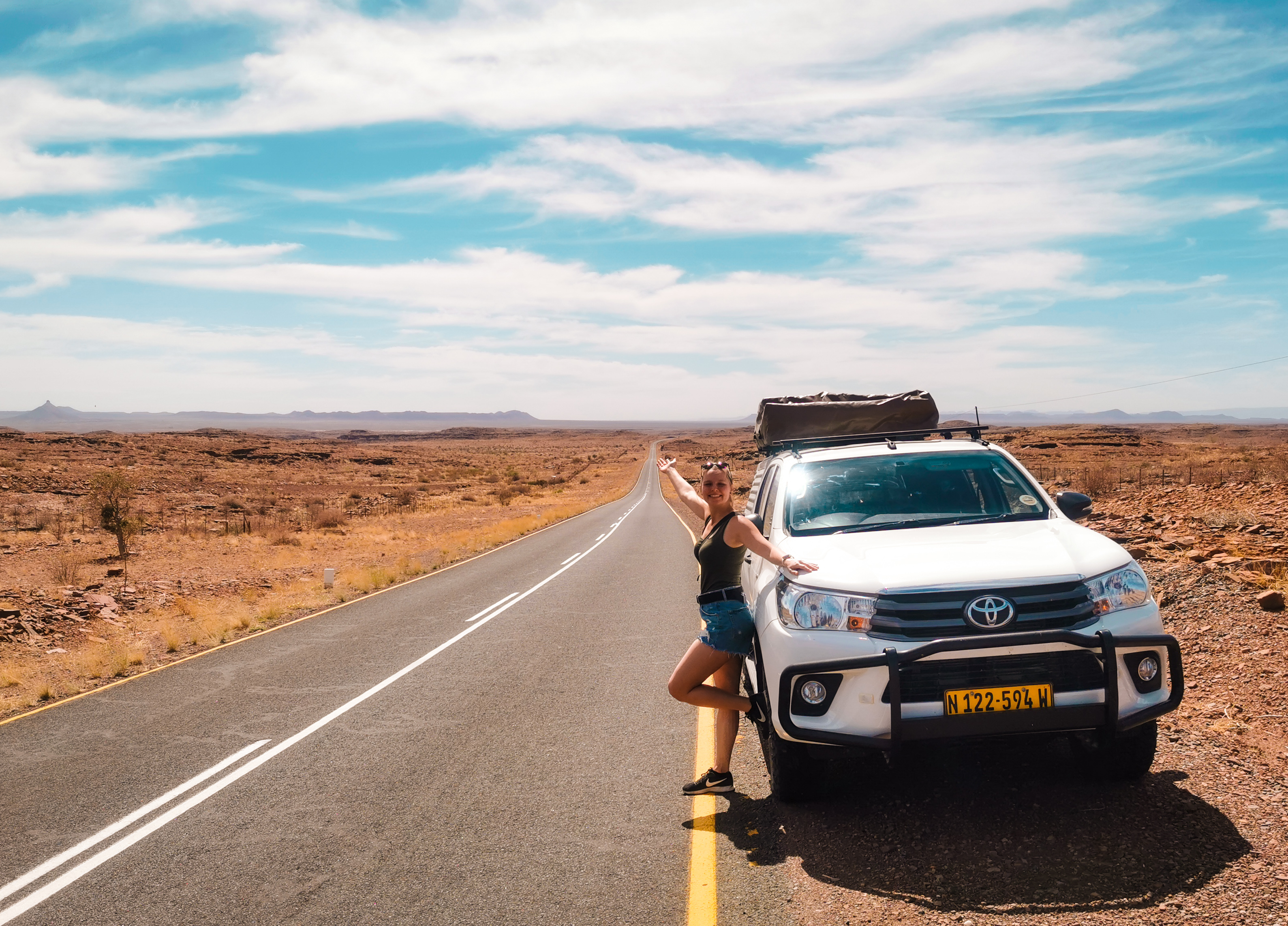
11. Bring closed shoes for outdoors
Yes, it’s warm in Namibia so you could wear sandals or flip-flops. BUT even when just getting out of the car for photos, you will walk on uneven ground and may need to step though gras etc. We once saw a scorpion on the ground just nearby, so I highly recommend wearing closed shoes at all times when outside – just to be safe.
12. Pack lots of sunscreen
The sun is strong in Namibia and on many day trips or excursions you will be outside – often without shade. After getting sunburnt on a day on the road we realized that we even need to wear it when inside the car. So make sure you get your face and shoulders covered.
(In case you forget it, you can buy sunscreen in a local super market – however only in bigger cities.)
13. Bring a hat
Again, the sun is very strong, so make sure you bring a hat or cap.
14. Take insect repellent
Although most of Namibia is malaria-free, you don’t want to take chances. Especially when outside in the dark (which you should do as often as you can because of the beautiful starry sky!), make sure you put some insect repellent around any exposed areas of skin (especially ankles, wrists, neck, etc.) for some peace of mind.
15. Bring enough warm clothing
This might sound counter-intuitive BUT: we were in Namibia during Namibian summer and still in the evenings it gets quite chilly & windy. So bring a sweater and a wind-jacket, as well as a long pair of pants.
16. Pack an AUX-cable for the car
This is the easiest way to connect your downloaded offline playlist to the car. Some cars will have bluetooth connection, but not all.
17. Car charger for electronics
This may come in handy if your car either doesn’t have a USB port or you need to charge mulitple devices simultaneously. Especially when camping not all sites have electricity, so make sure you have enough charging options.
18. Powerbank
In case you run out of power, are at a campsite without electricity or need to charge multiple devices (phones, camera batteries, etc.), this can come in quite handy.
19. Pack a headlamp
This is a real life-saver especially when camping, but also when outside after dark (e.g. walking to the waterhole at NWR accommodations inside Etosha), taking photos in the dark, needing to get something from the trunk of your car etc.
20. Bring some bioculars
Depening on what you want to get, this may be a small investment but it made our experience in Etosha National park so much more fun!
We brought our Celestron 71406 TrailSeeker 10 x 42 and were very happy. (This also makes a great gift for a birthday or Christmas before the trip).
21. The right camera equipment
In addition to your camera, there are two lenses that you should consider getting/bringing for your trip to Namibia.
Tele-zoom lens
For animal sightings and wildlife photography. I brought my Sony SEL-70350G Tele-Zoom Lens (70-350 mm, F4.5-6.3, OSS, APS-C) to use on my Sony Alpha 6000. Images were very sharp and I was able to get in real close to the animals in Etosha National Park.
Ultra-wide Angle lens
For landscape photography and astrophotography. For my Sony Alpha 6000, I have a Samyang 12mm F2.0 Lens for Sony E-mount. The pictures turned out beautifully, especially the pictures of the night sky & the milky way.
For my easy step-by-step Beginners’ Guide to Astrophotography check out my post here (coming soon).
A tripod
A must for astrophotography! I was happy with my travel tripod by K&F Concept (TM2324) in aluminum.
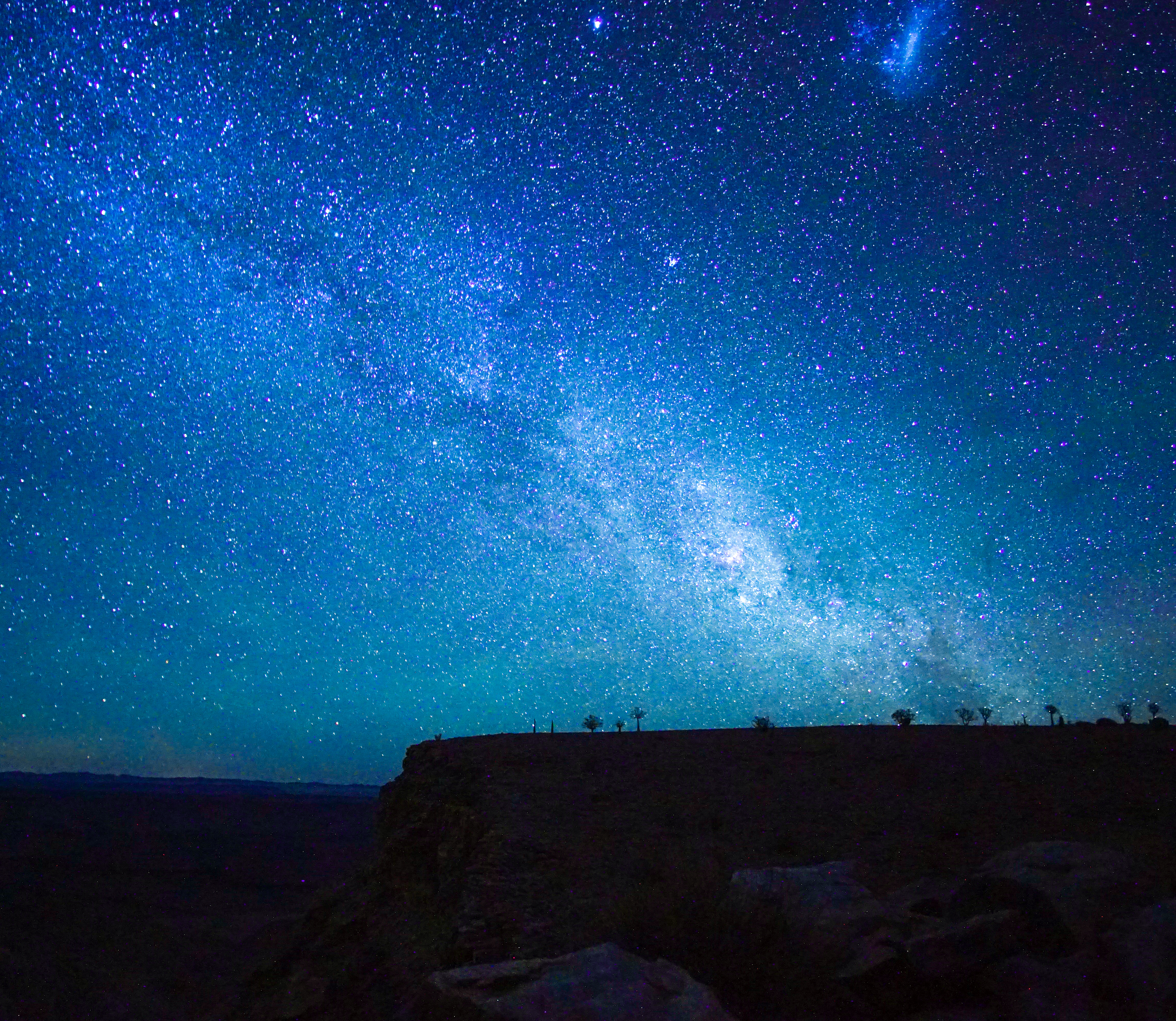
…and Things not to pack
22. Expensive jewelery
It’s hot, dusty and you will be in remote areas most of the time. Moreover, many people in Namibia are very poor. So keep your expensive jewelery at home: you probably will not need it and you want to avoid attracting unnecessary attention when walking in areas where people don’t even have enough to eat.
23. Fancy clothes
Even when staying at nice lodges, if you wear very fancy stuff chances are you will be overdressed (because most people will wear their outfits from the day). So save yourself some luggage-space & bring functional clothes that you can wear both at day & in the evening.
24. For ladies: leave your heels at home
Honestly, I took a pair of heel wedges to wear with a nicer dress for dinner at the lodges we stayed. I did not wear them once. Why? Because the way from your room to the restaurant is often not paved, it’s very dusty outside and it would be way overdressed. So Ladies: keep them at home and rather pack an extra pair of sandals.
Upon Arrival
25. Get a Namibian SIM Card
At the airport, right outside arrivals, you will find a little MTC Shop where you can get a pre-paid SIM Card. Super quick, easy and convenient. We got a card with basic credit and 1 GB of data extra per week. It ended up costing us a total of about $15 for 3 weeks.
26. Get cash at the airport
Get some cash at the ATM after landing at the airport (FNB Bank didn’t have any charges for us when we withdrew). At most placess you will be able to pay by card (e.g. gas stations, supermarkets, etc.). However some places only take cash, so make sure you have enough on you just in case.
Also, it is customary to give small tips for little services (e.g. to the attendant at the gas station, to “guards” watching your parked car in the street, etc.).
27. Get a Namibian coverter Plug
Either get this at the airport or order this online ahead of time. Most accommodation had European adapter plugs, however in some they didn’t (e.g. NWR Camps in Etosha). So I suggest having one, just in case.
28. Get a hard-copy road map
Besides having Google offline maps downloaded, I suggest getting a hard-copy road map along as well. Although Google maps helped us most of the time, some routes were much more intuitive when following the map. Also, sometimes Google includes “roads” which are not official roads drawn into the map, which may or may not be drivable.
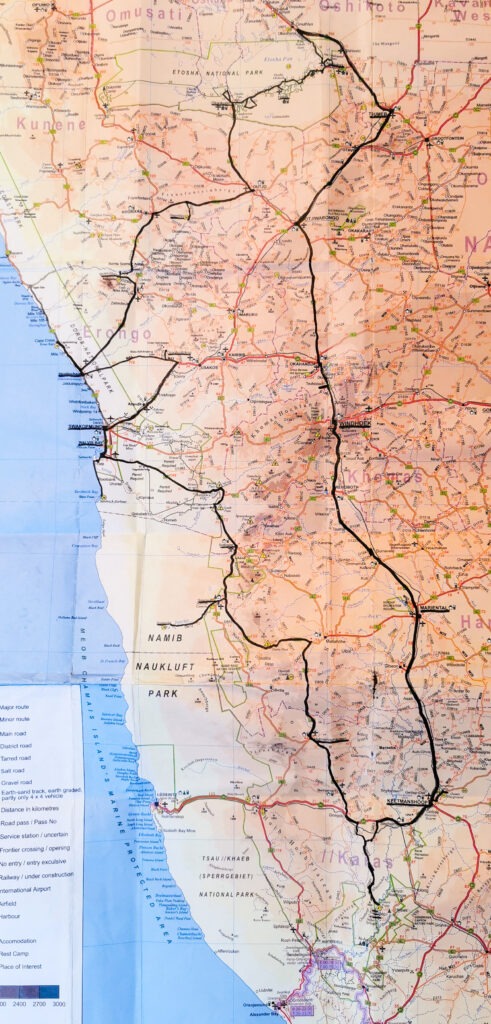
29. Ask locals for the best route to take
Very important! When taking a break or stopping for coffee, ask the locals for the best route to take. This is especially important when travelling during wet season.
On our way from Fish River Canyon to Sossusvlei, we asked the hotel owner in Helmeringhausen if she can advise taking the C27 (the more scenic road we had planned to take) vs. the C14 & C19. She told us that due to the rains, the C27 was partly not passable, as the road had been washed away. Therefore she highly recommended we take the less scenic road, which we did.
30. Head out of Windhoek ASAP and start exploring
Is Windhoek worth visiting?
As for most Namibia tourists, Windhoek will probably be the start and end of your trip. So you may ask yourself, is Windhoek worth visiting? Windhoek itself is relatively small (at least the main city center) with a few sites such as Christuskirche and the Namibia Crafts Center worth visiting. Other than that and some nice restaurants there is not that much you can do – especially when comparing what the rest of Namibia has to offer.
My suggestion? Get out of Windhoek as quickly as you can and start exploring! A morning or afternoon in the city is enough. My recommendation is to do this at the end of your trip before your flight back (i.e. spending max. 1 day/night in the city).
If you are camping, go to a supermarket, get your groceries, and hit the road (see below). Namibia is absolutely stunning and has much more to offer than Windhoek.
What I do recommend in Windhoek is eating at Joe’s Beerhouse. For non-vegetarians they have an impressive selection of game steaks: from crocodile, to zebra, kudu, oryx and springbok. For a little “tasting” of all of these, go for the Bushman’s Sosatie! If you are looking for something a little more up-scale, check out Stellenbosch Wine Bar or Cape Town Fish Market.
31. Stock up on basics in Windhoek before hitting the road
After picking up your rental car and before hitting the road, I suggest stocking up on all basics in Windhoek. The next larger & well-stocked supermarkets are only in larger cities. If heading south like my suggested itinerary, this would be in Mariental or Ketmanshoop.
You can stop by at The Grove Mall where they have a huge “Spar”. Definately get some water (we got two 5L bottles to begin with) and some snacks for the long car drives.
32. Don’t drive too far on your first day – max. 200km!
This is a very heartfelt piece of advice: don’t drive too far on your first day! We had originally wanted to drive all the way from Windhoek to Ketmanshoop or Fish River Canyon in one go. We were so happy that we didn’t follow through but cut the drive up into several pieces.
For one, you will be extremely tired after the long flight. Secondly, chances are you will need to spend some time figuring out the car if you don’t drive a 4×4 on a regular basis. And thirdly: the highway is completely straight. This is very tiring and requires lots of concentration (which is exhausting when you are already tired).
Driving in Namibia
“No Namibia road trip ever ended with a clean car”
Me
So prepare to get dirty and go on an adventure of a lifetime! Driving in Namibia is special in many ways, so make sure you pay special attention to my tips below.
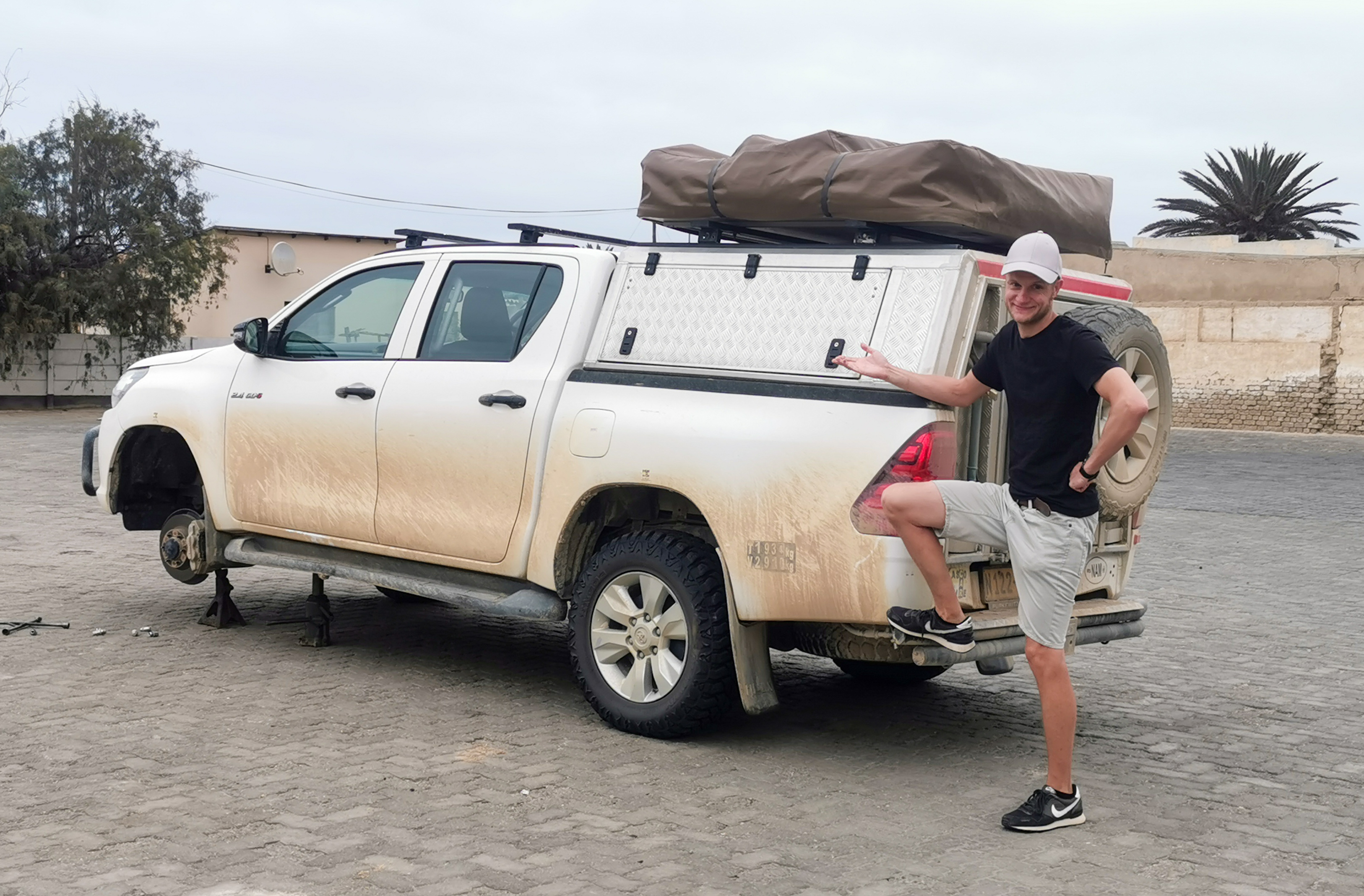
33. Drive on the left
In Namibia, you drive on the left. If this feels strange to you at first, don’t worry, you will not pass so many cars as soon as you leave Windhoek.
34. Always plan +1-2 hours when travelling on gravel roads
Don’t trust drive times from Google maps. In Namibia, only about 12% of the roads are tarred. This means you will need to go slow – even just to save your tyres.
Also, distances are far. Namibia is a very large country, so getting from A to B often requires long hours on the road, which can be tiring.
And also: the landscape is so breathtaking, you may stop on the way several times to take pictures, which further adds to your “time account”.
35. Don’t speed!
A simple rule (also in most rental contracts). Independently from what it says on the road signs, speed limits are:
- 60km/h – national parks
- 80km/h – gravel & salt roads
- 120km/h tar
Most accidents occur from loss of control of the vehicle (i.e. when speeding on gravel). Just don’t.
36. Reduce / Increase tyre pressure when driving on different road surfaces
This is a big one to make sure your car has enough grip on the road and to make sure you save your tyres from punctures. Recommended pressure on the various surfaces is:
- On tar roads ~2 bar
- On gravel roads ~1,8 bar &
- On sand roads (e.g. Sossusvlei) ~1,5 bar
37. Have a compressor & tyre pressure gauge in your car (and know how to use it!)
This is a game-changer and taps into point 36. Our car had both of these included in the car’s standard equipment and we used this daily as we often drove from tar-to-gravel and back.
So make sure you know how to use it! If you don’t, ask your rental agency when they explain the car to you. It will save your tyres from most puctures (we only had a small hole once) and ensure you have good grip on the road.
38. Have at least 2 spare tyres in your car
Most rental cars will have this, but I cannot stress how important this is. The roads are really in partly very bad condition, so when driving in Namibia is is more likely you will need a spare tyre, than not need it.
39. In case of a punctured tyre, get it patched at a tyre repair shop
In case you get a punctured tyre, try getting it patched up in one of many tyre repair shops. It is quite cheap (about 150 N$), saves you a lot of hassle of changing the tyre as well as the fee you have to pay your rental agency anyway. In most insurance policies, tyres are NOT included. So, for us, it was really worth it!
40. Fuel up whenever you can
Distances are far and especially in remote areas, you may drive for hundreds of kilometers without a gas station. So make sure you fuel up when you get the chance, especially if your range is les than 100km left.
Further up I mentioned getting a paper road map – these are also good for showing you where the gas stations int he country are, so you can plan ahead.
41. Don’t drive in the dark
Don’t drive in the dark – many car rental agencies will also put this in the contract. One of the main accident causes is crashes with animals in the dark – game or livestock. So be extra careful, or just don’t do it.
42. Take enough breaks
It’s hot and drive times are long. So make sure you take breaks while driving. Have water, bring snacks or take a little coffee break. This will make your driving more enjoyable and less exhausting.
And there are some very nice spots along the road to stop at – e.g. Solitaire or Helmeringhausen (each declaring they make the best apple pie in Namibia. Maybe you have to find out which is true ;-))
En-route
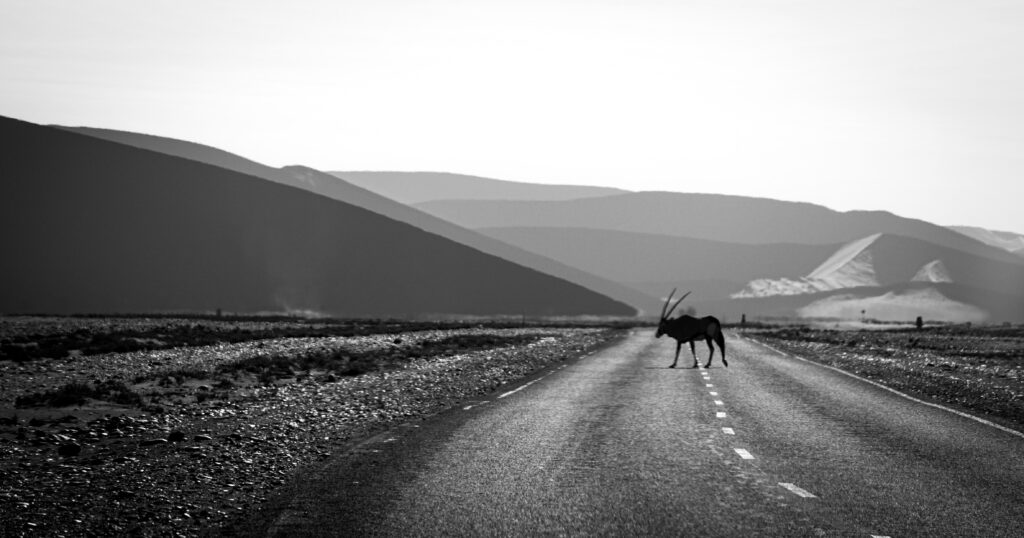
43. Start your days early
Leave early and try driving most of the distance in the first half of the day; it’s wonderful arriving at your accommodation around 2 or 3 pm and being able to relax after the drive (often by a pool).
44. Always have enough water and food in the car
This is very important. Distances are long and it can get very hot so make sure you stay hydrated. Also, as some places are very remote, make sure you have enough snacks in the car for when you get hungry, as you might not always have a place to eat en-route.
45. Namibian tap water is safe to drink
Namibian tap water is safe to drink in most places, even if it doesn’t taste like the bottled- or tap water you may be used to. We bought two 5L bottles the first day when arriving & then refilled these whenever we could at our accommodation, so we always had enough water on us.
46. Always have small change at hand
In Namibia is is customary to tip for small services like your gas station attendant, the guys “watching” your car when you park in a city, your hiking & nature guides after a tour. So make sure you have change at hand (e.g. N$5-N$10).
Namibia is a very poor country, so leaving behind a generous tip can make a huge difference to many Namibians. Especially with the COVID-19 crisis, tourism – one of the main sources of income – has drastically decreased, putting the livelihood of many into jeopardy. So be generous and spend lots of money. Chances are people will need it much more than in your home country.
47. If you’re vegetarian, let your accommodation know
On most days in Namibia, especially staying in remote places e.g. in Lodges the menu was meat, veggies, and potato. The meat was usually game steak or beef, but it is really the main part of any dinner. The same goes for breakfast. The standard option was bacon or sausage and eggs. When requesting just the eggs, we were met with surprise and sometimes disbelief. It is just very normal in Namibia to have meat with every meal.
So if you are vegetarian, don’t worry – there will likely be an option, but make sure you let the accommodation know in advance so they can plan ahead. Otherwise, the chance is pretty high of getting all the veggie sides in a larger portion as a main course.
48. You have to camp at Spitzkoppe
We are usually not big on camping, therefore we stayed mostly at lodges, B&Bs, and Guesthouses. However, if there is one place you should definitely camp in – do it at Spitzkoppe Restcamp. It is a once-in-a-lifetime experience and became one of our most cherished memories from Namibia.
49. Try a “Rock Shandy” while in Namibia
Made up of lemonade, soda & Angostura bitter, Rock Shandy became our go-to refreshment drink while in Namibia. You can get it everywhere and it is absolutely delicious. For the “pro” version try a “Malawi Shandy” which replaces lemonade & soda with bitter lemon & ginger ale. Also super delicious!
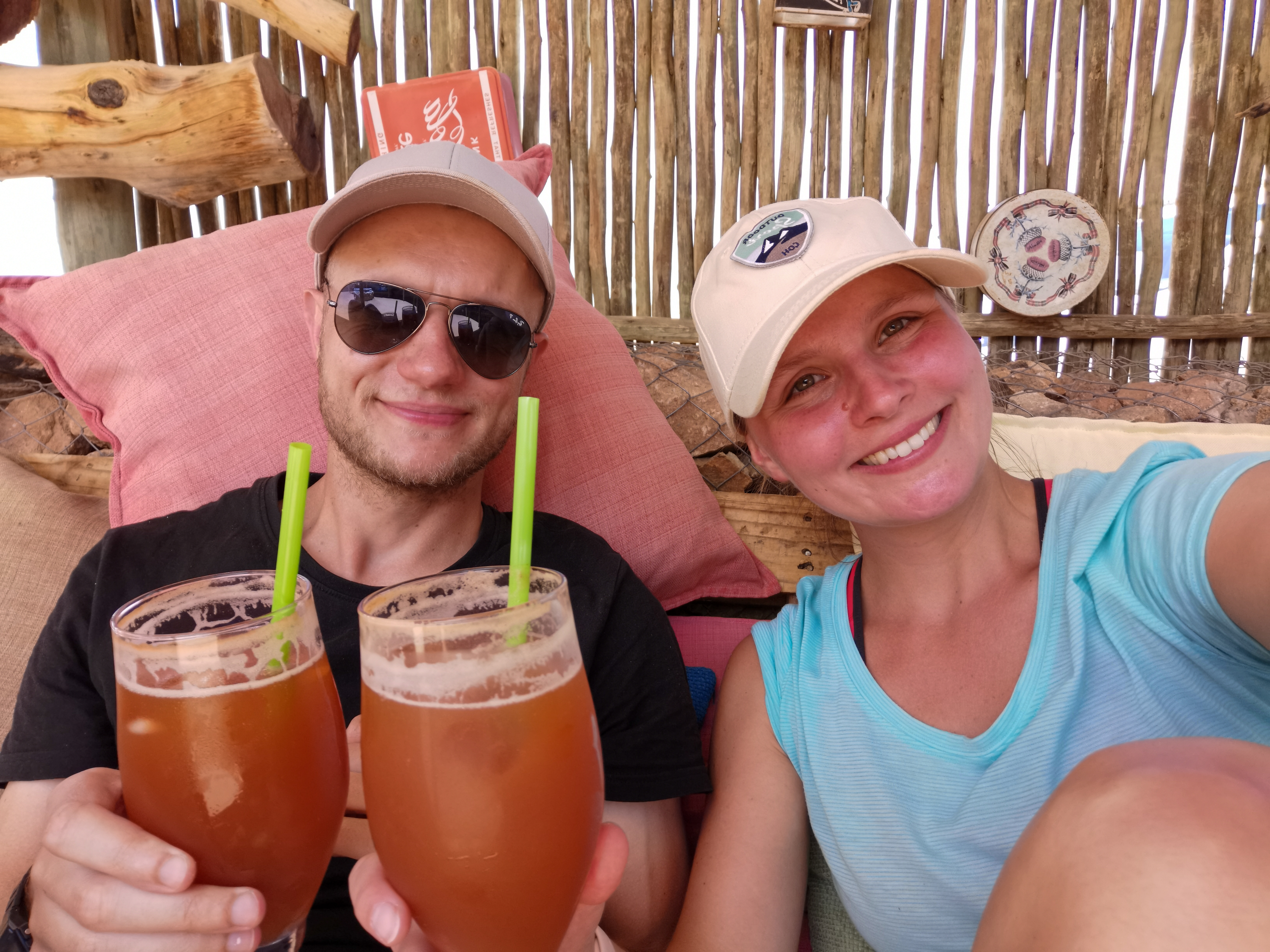
50. Don’t rush – Enjoy
You probably came to Namibia for the beautiful, endless landscapes, open roads & wildlife sightings. So don’t rush! Enjoy every minute on the road, soak in the beautiful nature and don’t stress to get from point A to point B. In Namibia the route is really the destination and the journey the reward.
And if considering the above 50 essential tips of my Namibia Travel Guide you will not need to stress as you will be prepared for everything 😉
What’s next?
In this Namibia travel guide, I provided you with 50 essential tips to make sure you make the most out of your trip and plan accordingly. While being general tips, they covered many basics such as driving, packing, planning, and important things to keep in mind.
But there is so much more!
Planning to visit Sossusvlei?
Want to know when to head out to make sure you experience the magical sunrise in the desert? Wondering what the best spot is to see the sunset? Worried about driving the last piece of the sand road into Sossusvlei? Or curious about what the best place to stay is? Make sure you check out my Ultimate Guide to visiting Sossusvlei & Deadvlei in Namibia!
Want to experience an epic Safari in Etosha NP?
Wondering where to stay, how to work the logistics, and where to get the best animal sightings? Want to know when the best time to visit is and what you should definitely bring on the safari? Thinking of doing a safari self-drive but still wondering whether it is worth it to go on a guided game drive? Don’t worry, I have you covered with my Ultimate Self-Drive Safari Guide for Etosha National Park!
Camping at Spitzkoppe?
Want to experience the wonderfulness of camping at Spitzkoppe? Wondering where the best spot is to haul your tent? What activities you must do (e.g. hiking, rock art, climbing, etc.)? What to bring? And where to find the famous Spitzkoppe Arch or Bridge? Then make sure to read my Guide to camping at Spitzkoppe with helpful tips to plan your trip (coming soon).
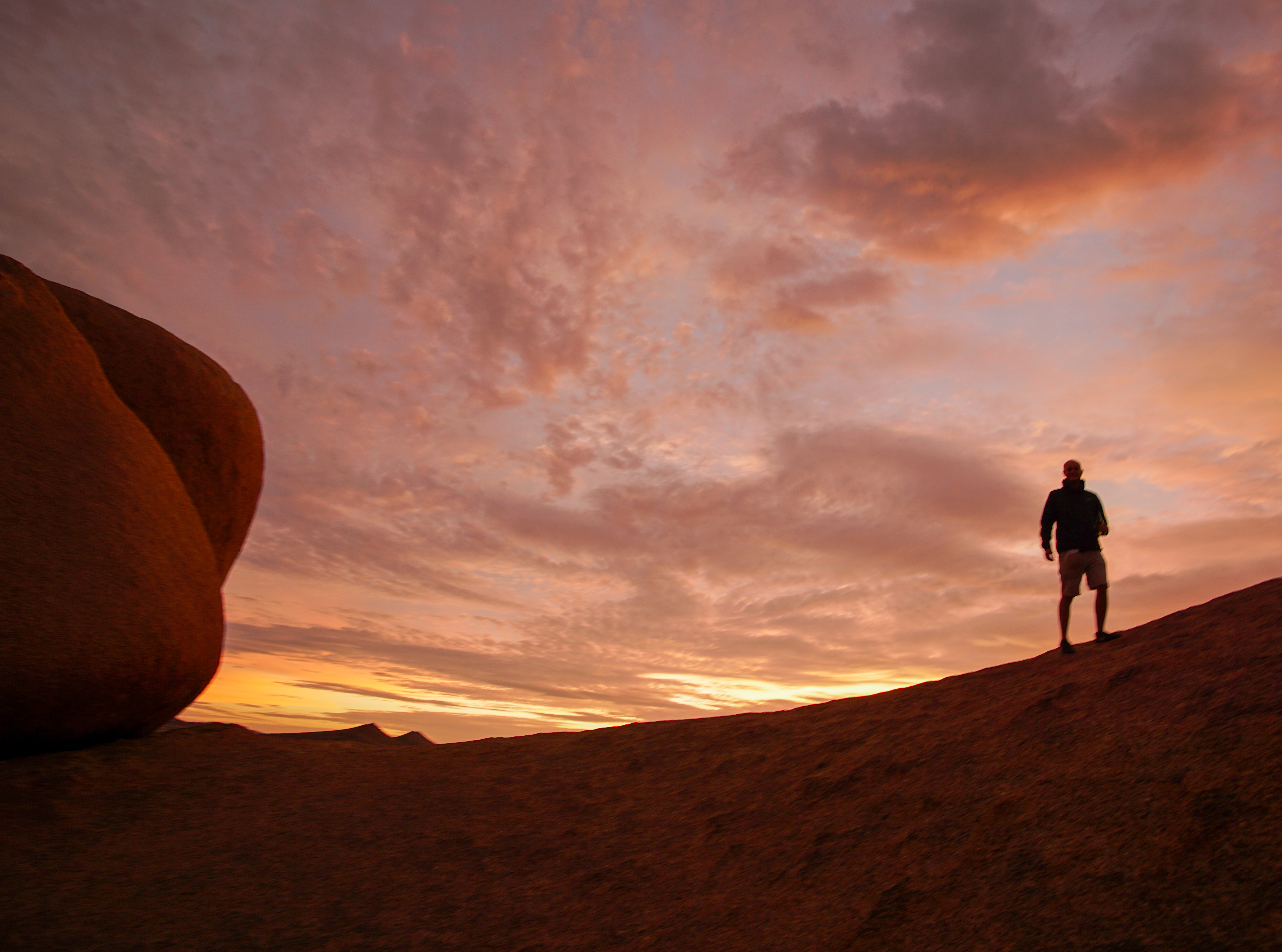
You May Also Like
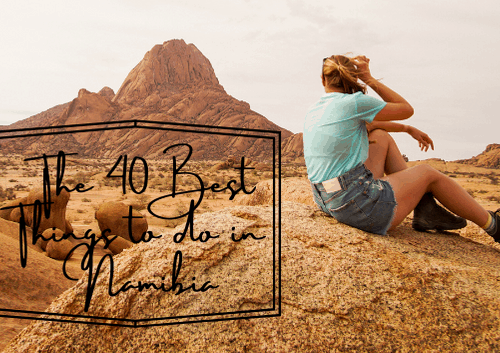
The 40 Best Things To Do in Namibia
March 16, 2021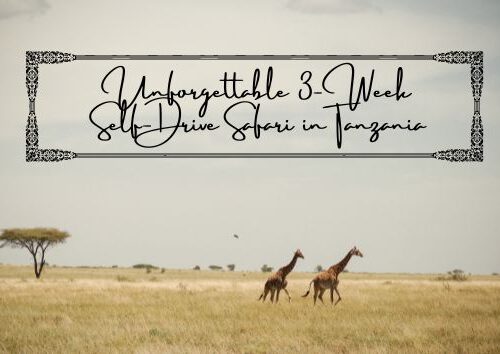
Unforgettable 3-Week Self-Drive Safari in Tanzania: Your Ultimate Adventure
April 21, 2024